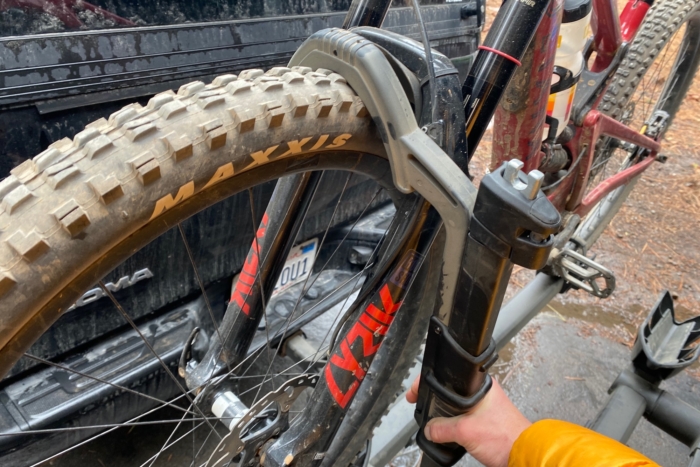The Best Hitch Bike Racks of 2025
- Weight: 52 lbs.
- Number of bikes: 2 (up to 4 with add-on)
- Carry capacity: 60 lbs. per bike
- Hitch receiver options: 1.25", 2"
- Locks: Integrated bike lock, included receiver lock
- Type: Platform
Pros
- User-friendly
- Secures bikes with no frame contact
- Easy to install and remove from vehicle
- Wide range of bike fit
Cons
- Moderately pricey
- Integrated locks feel pretty flimsy
- Weight: 37 lbs. (2-bike, 2" receiver size)
- Number of bikes: 2 (up to 4 with add-ons), also comes in 1-bike and 3-bike versions)
- Carry capacity: 60 lbs. per bike (2" receiver size), 40 lbs. per bike (1.25" receiver size)
- Hitch receiver options: 1.25" and 2"
- Locks: Semi-integrated cable lock and FlatLock Hitch Cam (2" receiver size)
- Type: Platform
Pros
- Comparatively affordable
- Wide range of bike fit
- Lightweight
- Add-ons available to increase capacity
Cons
- Lots of plastic parts
- Less refined than more expensive options
- Quite a bit of assembly required
- Weight: 63 lbs.
- Number of bikes: 2
- Carry capacity: 60 lbs. per bike
- Hitch receiver options: 2"
- Locks: Integrated hitch lock and bike cable lock
- Type: Platform
Pros
- 180-degree arm swing for full use of the back of the vehicle even with bikes loaded
- Less expensive than a swing-away extension plus bike rack
- User-friendly rack with versatile bike fit
Cons
- Complicated assembly takes some trial and error to get right
- Add-on for additional bikes not available
- Weight: 64 lbs. double, 37 lbs. single, 2" receiver size
- Number of bikes: 1 or 2, expandable to 4
- Carry capacity: 100 lbs. per bike up to 2 bikes
- Hitch receiver options: 2" and 2.5"
- Locks: Integrated pin locks for both bikes and hitch receiver
- Type: Platform
Pros
- Extremely durable
- Every part is replaceable with hand tools
- Nothing touches the bike frame
- All-aluminum construction resists rust and corrosion
Cons
- Heavy
- Weight: 76 lbs.
- Number of bikes: 6 (also comes in 4-bike version)
- Carry capacity: 240 lbs. total (roughly 40 lbs. per bike, suitable even for a heavy 55-lb. e-bike positioned in the middle)
- Hitch receiver options: 2"
- Locks: Yes, locking hitch bolt and the option to use your cable and U-lock.
- Type: Vertical, handlebar hang
Pros
- Impressive carrying capacity
- Foot-activated tilt
- Accommodates all types of bikes (and even snowboards and skis!)
- Durable and proudly made in the USA
- Avoids bike compatibility pitfalls of some other vertical racks
Cons
- Does not come with an integrated lock for bikes
- Heavy and requires significant storage space when taken off car
- Expensive
- Weight: 63 lbs.
- Number of bikes: 2 (up to 4 with add-ons)
- Carry capacity: 67 lbs. (2" receiver size), 60 lbs. (1.25" receiver size)
- Hitch receiver options: 1.25" and 2"
- Locks: 12mm steel cable lock and locking hitch pin
- Type: Platform
Pros
- Sleek design
- Holds bikes with tire contact only
- One-handed clamp arm operation
- Integrated brake lights
- All-metal construction
- Versatile bike fit
- High weight capacity
Cons
- Expensive!
- Weight: 35 lbs.
- Number of bikes: 4
- Carry capacity: 40 lbs. per bike
- Hitch receiver options: 1.25" and 2"
- Locks: SpeedKnob locks rack to vehicle, cable lock for bikes sold separately
- Type: Hanging
Pros
- Ease of use
- Lightweight and easy to store
- Affordable
- Integrated bottle opener
Cons
- Cable lock not included
- Impossible to avoid frame contact
- Frame adapters are separate purchases
Other Hitch Racks To Transport Your Bikes
- Weight: 60 lbs.
- Number of bikes: 1 or 2 bike options
- Carry capacity: 66 lbs. per bike
- Hitch receiver options: 1.25", 2"
- Locks: Included cable lock and locking hitch pin (keyed alike)
- Type: Platform
Pros
- Dual clamp arms only contact bike tires
- High weight limit – 66 lbs. per bike
- Comes with locks
- Convenient tilt-release handle
- Secure bike hold – included wheel chocks
- Stable – good anti-wobble system on 2" version
Cons
- Fairly expensive
- Fairly heavy
- No add-ons to expand capacity
- Weight: 66 lbs.
- Number of bikes: 2
- Carry capacity: 80 lbs. per bike
- Hitch receiver options: 2”
- Locks: Hitch pin lock and integrated cable lock
- Type: Platform
Pros
- 80-pound weight limit — can handle heavy e-bikes
- Tool-free installation
- Sturdy, wobble-free
- Very secure bike hold
- No frame contact — front wheel hook can’t even scuff up forks
Cons
- Expensive
- Heavy and bulky when not in use
- No add-ons to expand capacity
- No compatible loading ramp accessory
- Weight: 23 lbs.
- Number of bikes: 4
- Carry capacity: 35 lbs. per bike
- Hitch receiver options: 1.25" and 2"
- Locks: None
- Type: Hanging
Pros
- Very inexpensive
- Lightweight and easy to store
- Easy installation
Cons
- No security features
- Frame contact carry
- Rack and bikes wobble around
- Weight: 66 lbs.
- Number of bikes: 2
- Carry capacity: 70 lbs. per bike on road; 42 lbs. per bike off-road
- Hitch receiver options: 1.25" and 2"
- Locks: Integrated bike lock and hitch receiver lock
- Type: Platform
Pros
- Accommodates a wide range of bike sizes and types
- High weight limit — good for e-bikes
- Ramp add-on available for loading heavy bikes
- Durable and secure while driving off-road
- Integrated bike lock is streamlined
Cons
- Tilt lever needs mindfulness — make sure it’s fully latched
- Significant max weight difference between paved and off-road use
- Heavy and bulky — difficult to move around and store
- Weight: 32 lbs.
- Number of bikes: 2
- Carry capacity: 40 lbs. per bike
- Hitch receiver options: 1.25", 2"
- Locks: Hitch pin lock and cable lock for bikes
- Type: Platform
Pros
- Easy install
- Lightweight and low profile
- Good-looking
- Tilts away from vehicle while fully loaded
Cons
- Lower weight capacity- 40 lbs.
- Limited wheelbase length – doesn't work with longer bikes
- Not compatible with add-ons
- Weight: 85 lbs.
- Number of bikes: 4
- Carry capacity: 60 lbs. per bike
- Hitch receiver options: 2"
- Locks: Included for hitch and bikes
- Type: Platform
Pros
- Frameless contact
- Rock-solid stability
- Good weight capacity
Cons
- Pricey
- Doesn’t fit fat bikes
- Heavy and very bulky
- Weight: 28 lbs.
- Number of bikes: 2
- Carry capacity: 35 lbs. per bike
- Hitch receiver options: 1.25" and 2"
- Locks: None
- Type: Platform with wheel cradles and frame hooks
Pros
- Secure cradle system
- Great price point
- Lower weight
Cons
- No access to the rear of your vehicle when bikes are on the rack
- Hold bikes by frame contact
- Somewhat cheap overall feel
- Weight: 35 lbs.
- Number of bikes: 2
- Carry capacity: 60 lbs. per bike
- Hitch receiver options: 1.25", 2"
- Locks: Locking hitch pin, integrated bike lock cables
- Type: Platform
Pros
- Slender footprint
- Zero frame contact
Cons
- Pricey
- Not the most refined look or feel
- Weight: 105 lbs. (2 33-lb. trays, 39-lb. base hitch)
- Number of bikes: 2 (3 bikes with add-on)
- Carry capacity: 80 lbs. per bike
- Hitch receiver options: 2"
- Locks: Locking hitch pin, integrated bike lock cables
- Type: Platform
Pros
- Easy to operate
- Quick load time
- Modular system to dial it in to your needs
- High weight limit
Cons
- Cost-wise the pieces add up
- On the arms, the release levers can get a tad stubborn
- The rack and bikes wobble on rocky, bumpy terrain
Hitch Bike Racks Comparison Chart
| Racks | MSRP | Rack Weight | Number of Bikes | Carry Capacity (per Bike) |
|---|---|---|---|---|
| Thule T2 Pro XTR | $800 | 53 lbs. | 2 (4 with add-on) | 60 lbs. |
| Kuat Transfer V2 | $489 (2-bike) | 37 lbs. | 2 (up to 4 with add-ons) | 60 lbs. |
| RockyMounts BackStage Swing Away | $800 | 63 lbs. | 2 | 60 lbs. |
| 1UP USA Super Duty | $900-950 | 64 lbs. | 2 (up to 4 with add-ons) | 100 lbs. (less for add-ons) |
| Lolo 6-Bike Rack with Foot Activated Tilt | $1,185 | 76 lbs. | 6 (4-bike version available) | 240 lbs total capacity |
| Kuat Piston Pro X | $1,389 | 63 lbs. | 2 (up to 3 with add-ons) | 67 lbs. (2″), 60 lbs. (1.25″) |
| Yakima RidgeBack | $379 | 35 lbs. | 4 | 40 lbs. |
| Hollywood Racks CrossTrack | $750 | 60 lbs. | 2 (1-bike version available) | 66 lbs. |
| Saris Edge | $1,000 | 66 lbs. | 2 | 80 lbs. |
| Allen Sports Deluxe Hitch Bike Rack | $130 | 23 lbs. | 4 | 35 lbs. |
| Yakima StageTwo | 70 lbs. on-road, 42 lbs. off-road | 66 lbs. | 2 (up to 4 with add-ons) | 70 lbs. on-road, 42 lbs. off-road |
| Kuat Sherpa 2.0 | $629 | 32 lbs. | 2 (4 with add-on) | 40 lbs. |
| INNO Tire Hold Bike Hitch 4 | $1,000 | 85 lbs. | 4 | 60 lbs. |
| Swagman XC2 | $150 | 28 lbs. | 2 | 35 lbs. |
| Saris SuperClamp EX 2-Bike | $580 | 35 lbs. | 2 (4-bike version available) | 60 lbs. |
| Saris MHS DUO 1-Bike & Base | $200 and $350 | 105 lbs. (2-bikes) | 2 (3 bikes with add-on) | 80 lbs. |
Why You Should Trust Us


How We Tested Hitch Bike Racks
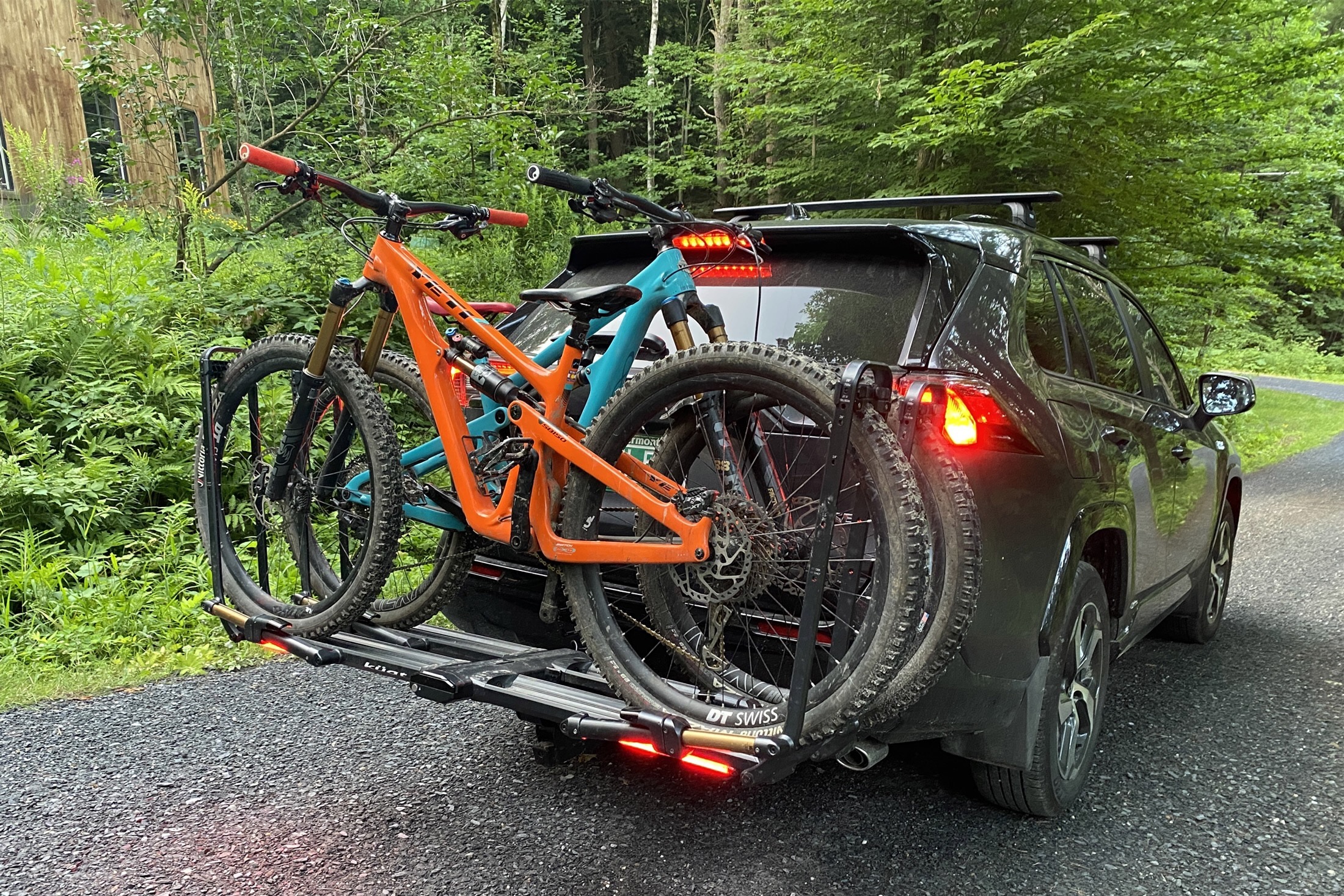
Buyer’s Guide: How to Choose a Hitch Bike Rack
Types of Hitch Bike Racks
Platform

Hanging
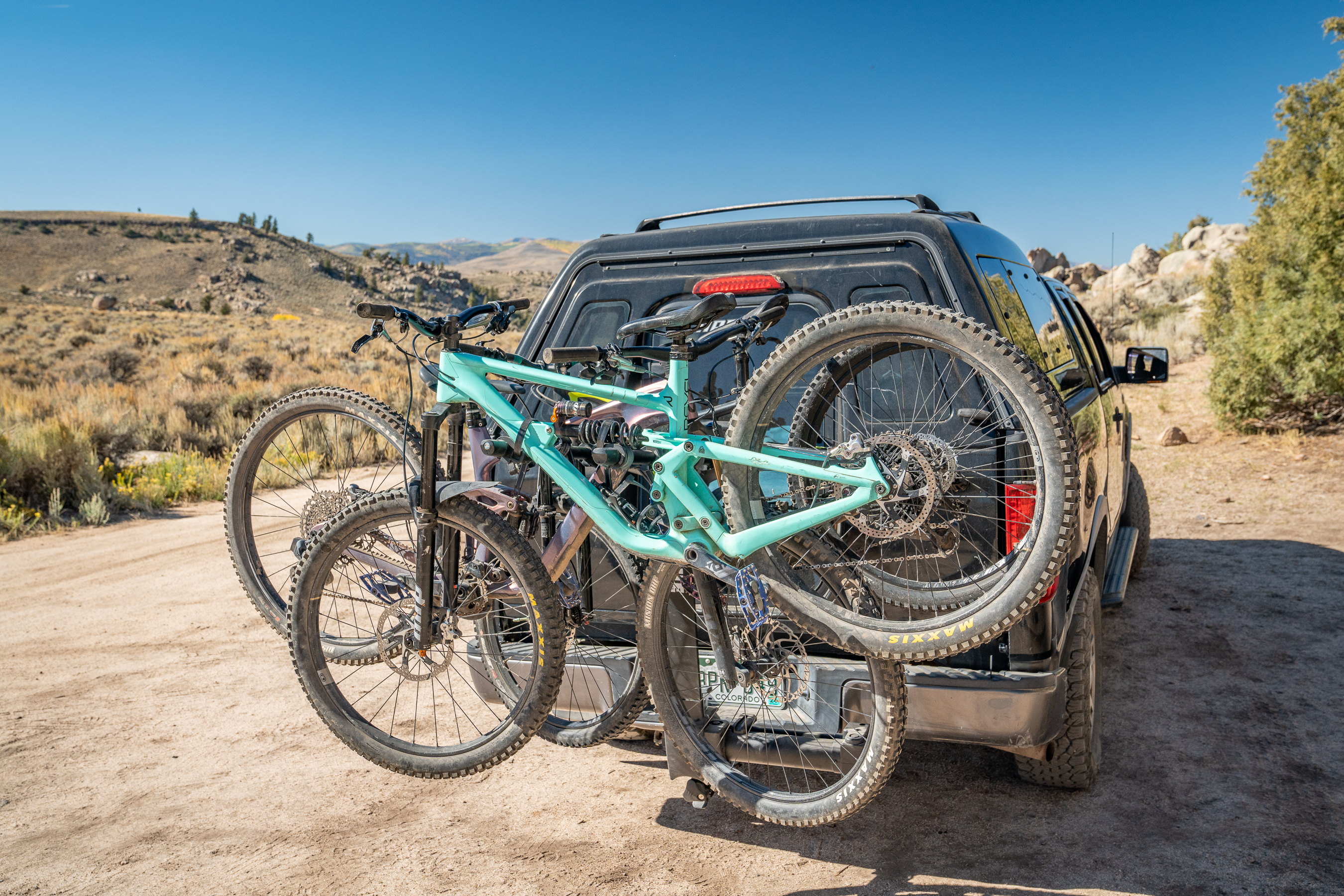
Vertical

Platform vs. Hanging vs. Vertical: Which Is Best?

Bike Attachment
Straps



Wheel Hooks and Clamp Arms
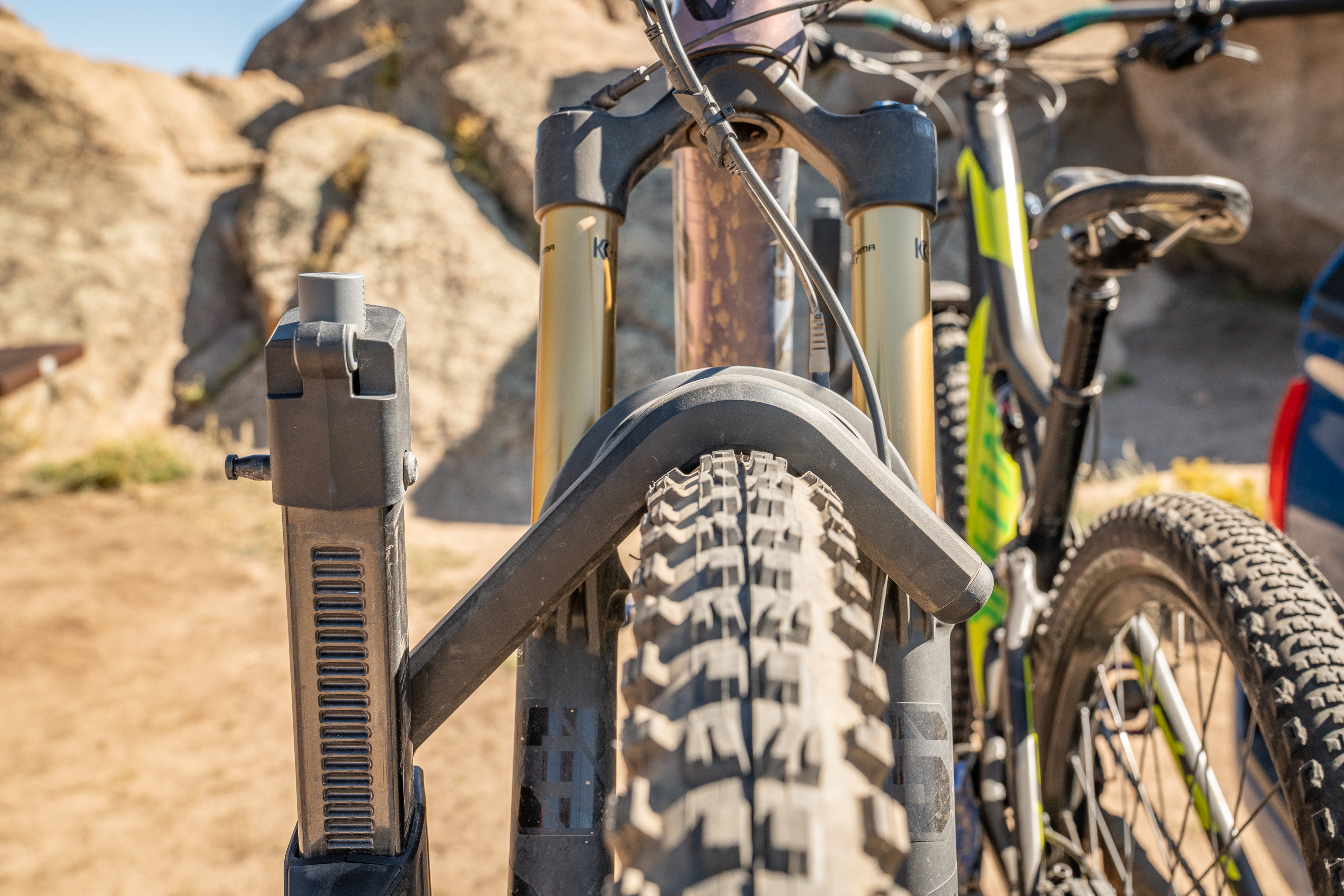

Vertical
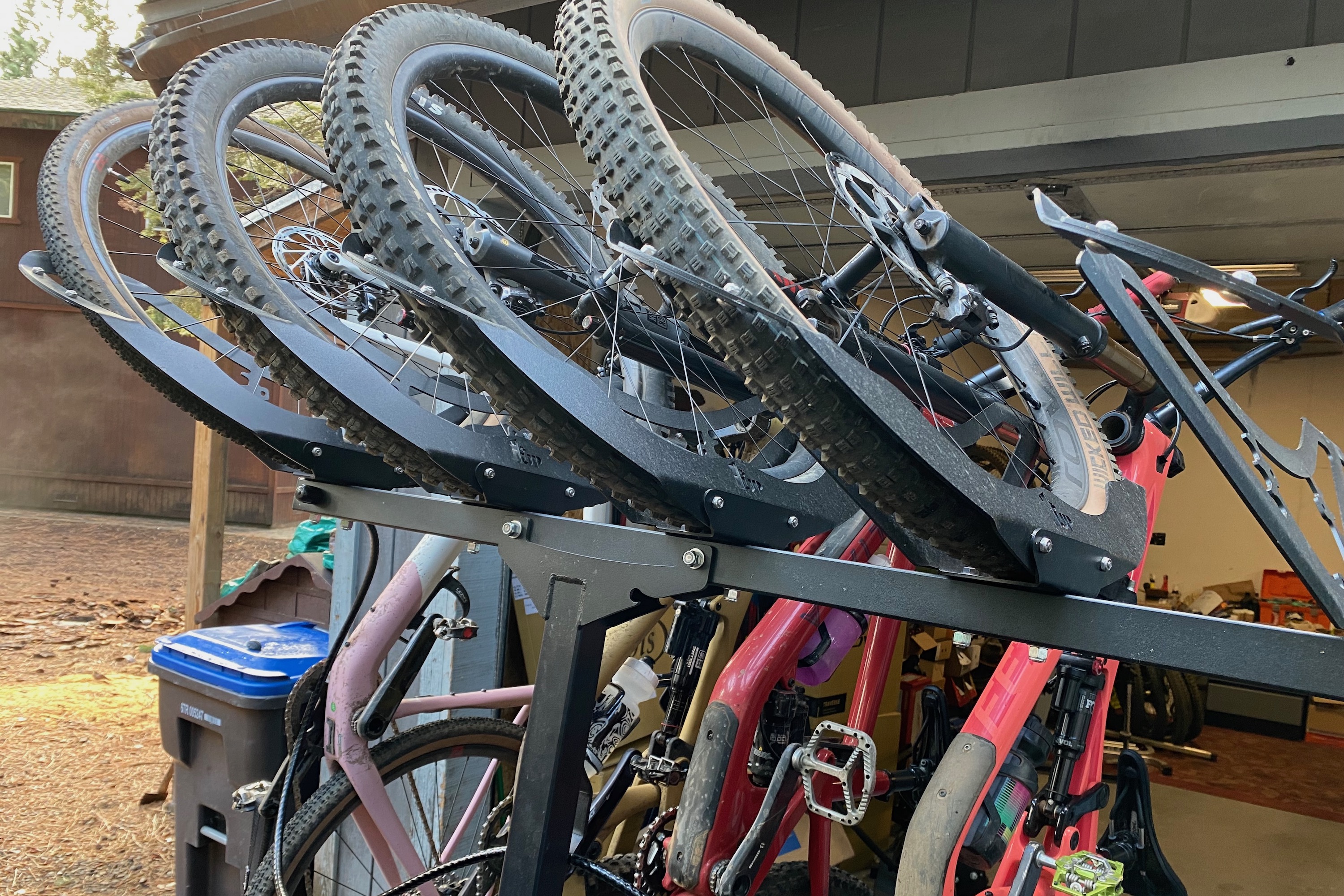
Number of Bikes

Bike Weight
Tilt and Swing-Away Features


Wheel Size, Tire Width, and Bike Length Compatibility

Hitch Receiver Size


Security


Ease of Use

Durability

Price & Value
Budget
Mid-Tier
Premium
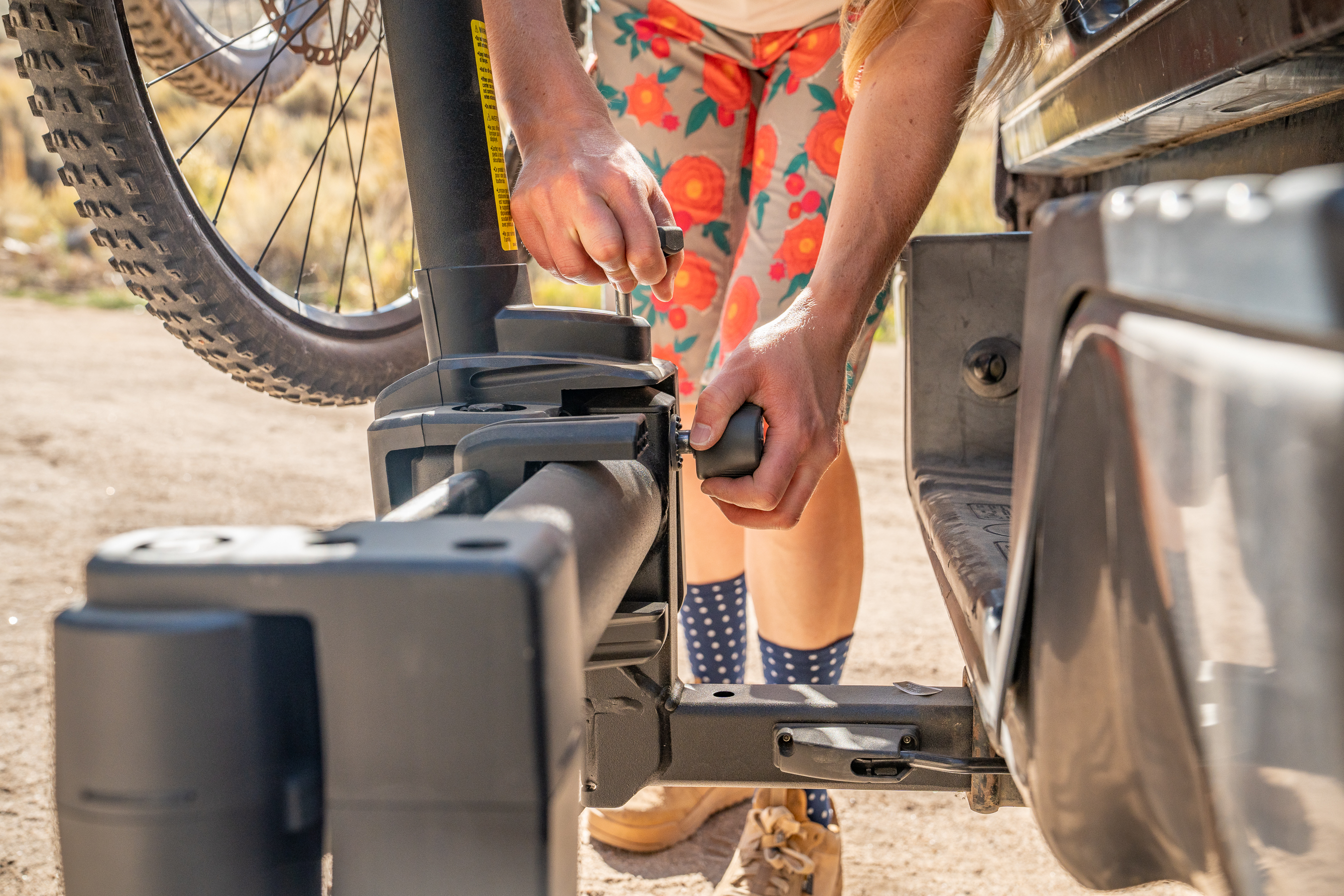
Frequently Asked Questions
The best hitch bike rack varies from person to person. With so many variables between each rider, it’s nearly impossible to choose one bike rack for every situation.
The best option is to decide what your needs are and pick a rack that works best for you. If your priority is finding a good, cost-effective rack, and you can pick up your bike and move it around without struggle, you can get a functional hanging rack for $100-200.
If keeping your bike safe and scratch-free is your main concern, a platform rack is a good choice. Platforms also sit lower to the ground, so it’s good for people who struggle to pick up their bikes.
The higher you go in price, the more features you get. High-end racks add security features, levers, and buttons that make them easier to use. They usually also offer ways to let you access your trunk without removing the bikes.
When choosing a rack, consider the features you’re willing to do without and which ones you need. Balance those needs with how much you’re willing to spend, and you’ll find the perfect rack for you.
Both hanging and platform racks have versions that can hold four bikes. Hanging racks require a little bit more finesse to keep your bikes safe, as they secure your bikes from the top. This makes it possible for the bikes to swing and hit each other during travel.
Fewer bikes can be spaced out, which minimizes the risk. But space is limited with four bikes, so ensure that the cradles are spaced out enough that the bikes won’t hit each other, even with minimal swing.
This is less of an issue with platform racks, as the bikes are locked into place via both wheels, adding a good amount of stability. It’s also easier to put the bikes on platform racks because the cradles are set so much lower. That aid, they cost a bit more, but we feel it is usually worth it.
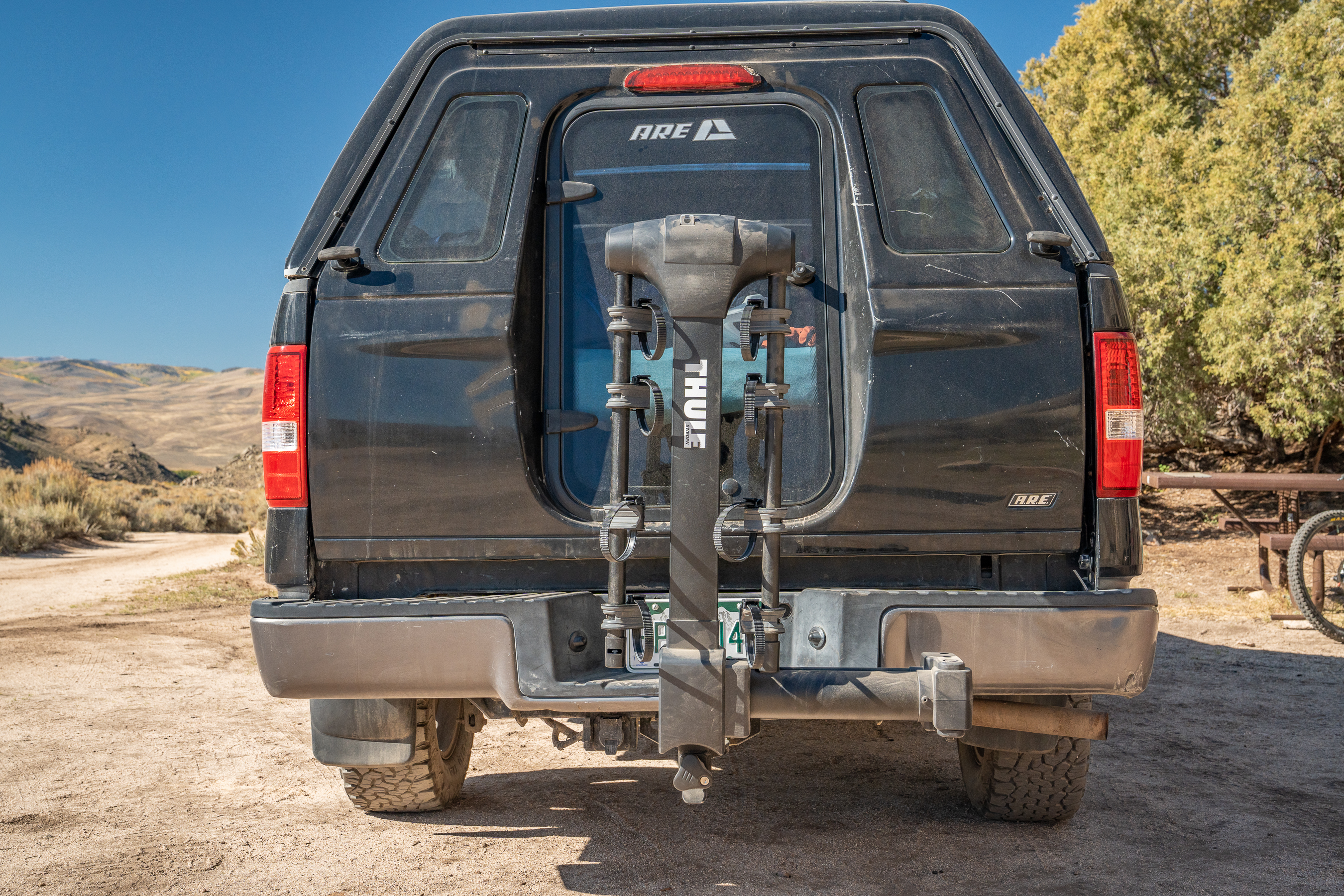
One of the reasons that so many people choose a hitch-mounted rack over a trunk-mounted rack is that the hitch doesn’t have any contact with the body of the car. This decreases any rubbing against the paint. It also generally keeps the rack away from anything on the body that it can dent or shatter.
However, no matter what precautions a company makes when designing a rack, there’s always the issue of user error. Opening your hatchback while the rack is on and upright can drive the hatch right into the rack.
This can cause denting and scratching to the rack or the car. Make sure the rack is out of the way when you access the rear of your vehicle.
Bikes can also contact your vehicle if you’re not careful. Platform racks sometimes carry the bike close to a vehicle’s back window. This can increase the odds of the handlebar going through that window on an especially bumpy road.
You can solve this by adjusting the cradles to make the bike sit farther away from the window. Hanging racks let the front tire hang free, which can lead to bumping and grinding up against your car.
It’s not as dire an issue as breaking a window, but it can damage the finish over time. It’s an easy fix, though. Secure the wheel with a strap or bungee cord to solve the problem.

All types of hitch racks have their advantages. That said, platform-style racks are generally the easiest to use. They have a lower loading height and the attachment systems are typically straightforward, secure, and user-friendly.
Overall, we’ve found that brands like Thule, Yakima, Kuat, and 1Up tend to include little tweaks like lever-adjustable tilting and integrated locks. Details like these go a long way in making a rack easier to use. Of all the models we’ve tested, the Kuat Piston Pro X is the easiest to use, but it’s also the most expensive.
If your vehicle has the capability, hitch racks are arguably the best option. Having the mount attach to your hitch receiver versus trunk racks or roof racks not only protects your car’s finish from damage, but it’s also extremely secure, as the mounts are made of heavy-duty steel.
They’re also much easier to install than other options, which is a huge perk for people who don’t want a rack on their car every day. Because it’s secured with a steel pin, it only takes one step to put it on a trailer hitch when you are going out for a ride, and one step to remove it when you’re done.
Other types of racks require more steps to attach them to a vehicle and may require you to lift the bike higher to load them.

The Best Roof Bike Racks of 2025
We tested seven of the best roof bike racks to help you find the right model to meet your needs and budget.

The Best Bike Locks of 2025
We tested 16 bike locks from top brands like OnGuard, Kryptonite, Hiplok, Ottolock, and more to find the best.












